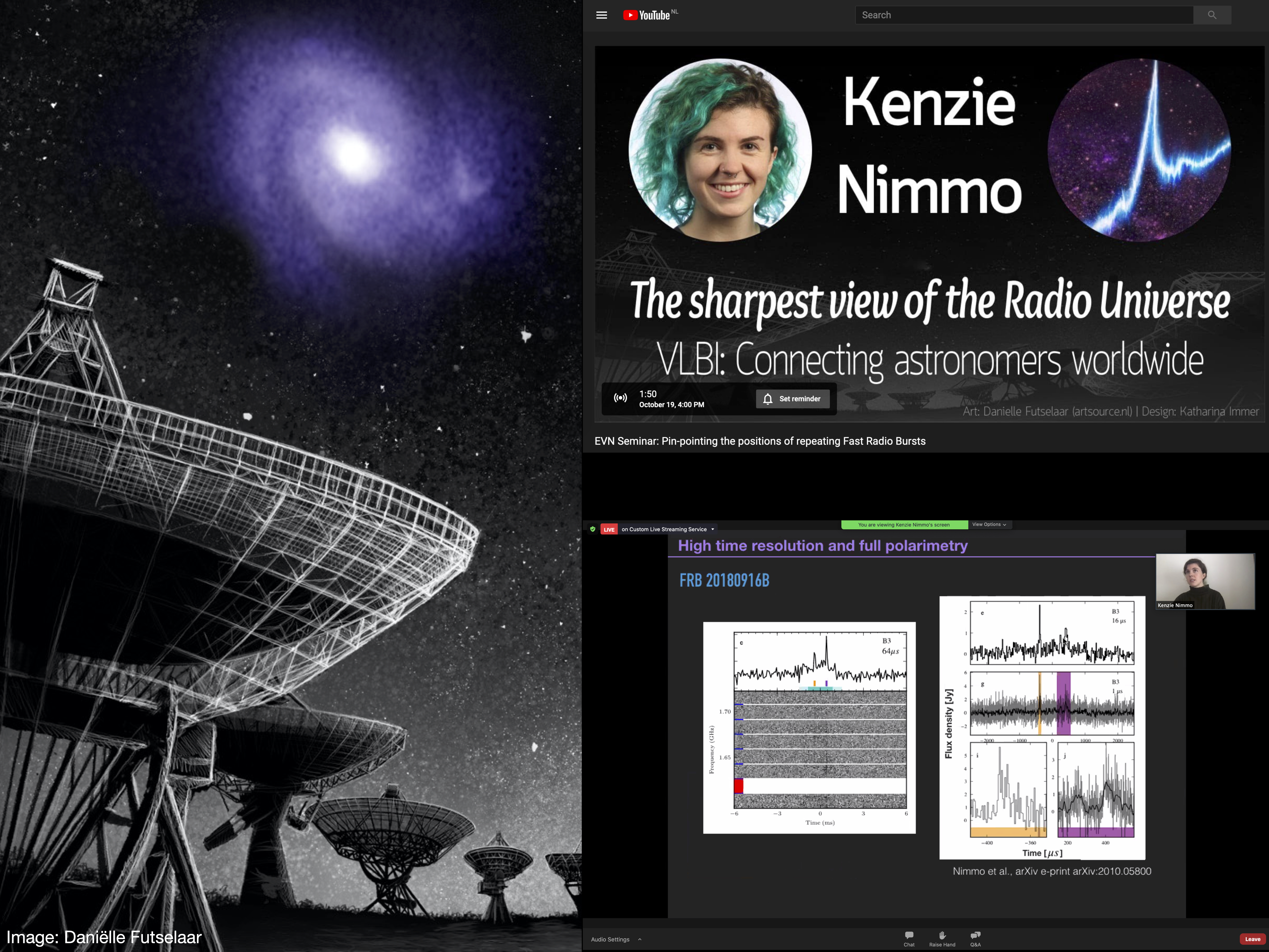Daily Image
23-10-2020EVN Symposium: Pin-pointing the positions of repeating Fast Radio Bursts
| Submitter: | Jason Hessels |
| Description: | On October 19th, 2020, ASTRON/UvA PhD student Kenzie Nimmo gave an online EVN Symposium talk to an international audience of about 125 participants. In her talk, entitled "Pin-pointing the positions of repeating Fast Radio Bursts", Kenzie explained how the European VLBI Network (EVN) can achieve the most precise FRB astrometry, and how this allows us to localise Fast Radio Bursts to the exact galactic neighbourhoods in which they originate (Marcote et al. 2017;Marcote, Nimmo et al. 2020). When coupled with high-resolution Hubble Space Telescope imaging, this provides important clues to the nature of these enigmatic sources (Bassa et al. 2017). One theory, which is gaining increasing traction, is that FRBs are produced by hyper-magnetised neutron stars (magnetars), possibly interacting with the wind of a massive star in a tight binary orbit. Kenzie also explained how EVN single-dish baseband data can help us decipher the FRB mystery. We recently used a subset of EVN dishes - out of session - to perform a high-cadence, multi-frequency monitoring campaign of the Milky Way magnetar SGR 1935+2154. In a campaign spanning hundreds of hours on source, we detected 2 bright radio bursts with Westerbork RT1, separated in time by only 1.4 seconds (Kirsten et al. 2020). This magnetar was recently identified as a possible FRB source within our own galaxy, because of an extremely bright (a fluence of Mega-Jansky milliseconds) radio flash detected by CHIME/FRB and STARE2 (CHIME/FRB Collaboration 2020;Bochenek et al. 2020). Lastly, also using EVN baseband data, Kenzie identified 3-4 microsecond structures in the time profiles of an FRB source (Nimmo et al. 2020). These are by far the shortest-duration FRB features seen to date, and this strongly constrains how large the emission region can be. It argues most naturally for models in which the bursts are created relatively close to a neutron star - as opposed to further out in a relativistic shock. |
| Copyright: | ASTRON/JIVE |
| Tweet |  |
